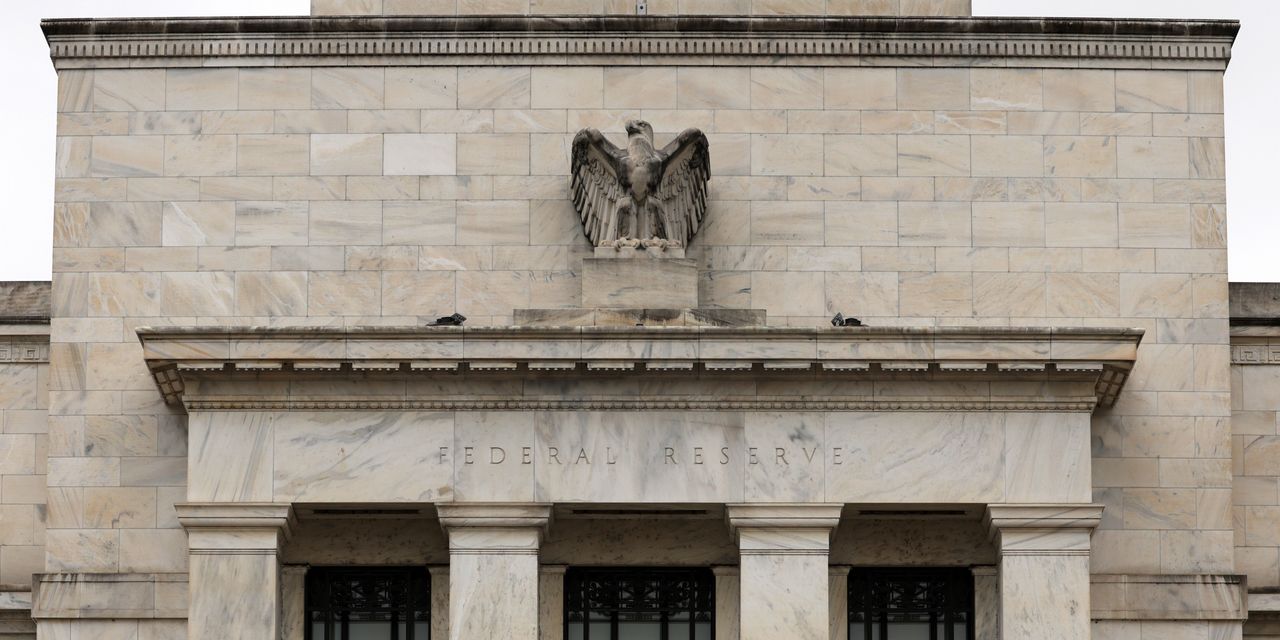The higher-for-longer interest-rate environment weighed on banks during the quarter as one central theme this earnings season, banking-industry players told MarketWatch.
With big regional banks such as Regions Financial Corp. and Zions Bancorp selling off sharply, with double-digit percentage declines in the past week, investors have been beating up bank stocks if the banks miss any key targets, such as net interest income.
Also read: Fed says bond market’s term premium is the reason behind rise in Treasury yields. Investors should take it with a dose of caution.
Timothy Coffey, an analyst who covers regional banks at Janney, said one common theme across the sector during this earnings season is that higher interest rates will weaken demand for loans.
“Almost every bank is reporting smaller loan pipelines (loans in application) not just year over year, but quarter over quarter,” Coffey said in an email to MarketWatch.
Deposits at banks continue to grow, but at a slower pace. One bright spot is credit quality, which has held up well for now, he said.
But higher interest rates continue to threaten preprovision net revenue and earnings per share and in turn, investor enthusiasm for bank stocks has dampened.
The macroeconomic environment remains uncertain as well, with JPMorgan Chase
JPM,
Chief Executive Jamie Dimon describing the current situation as possibly “the most dangerous time the world has seen in decades” as wars rage in Ukraine and, more recently, Israel.
Also read: Jamie Dimon says it’s ‘the most dangerous time the world has seen in decades.’ Here are all the ripple effects.
Bond prices have also been threatening banks. The 10-year Treasury yield
BX:TMUBMUSD10Y
pushed above the 5% threshold and traded at its highest in 16 years on Monday, before cooling slightly.
Higher bond yields push down the price of debt and cause an increase in unrealized losses in bank portfolios.
During the past week of bank earnings, the Financial Select Sector SPDR exchange-traded fund
XLF
has fallen 3.8%, while the SPDR S&P Regional Banking ETF
KRE
has lost 4.4% and the KBW Nasdaq Bank Index
BKX
has fallen about 5%.
Regions Financial Corp.
RF,
has fallen 13% in the past week, Comerica Inc.
CMA,
is down about 9% and Zions Bancorp N.A.
ZION,
has lost 15% of its value.
“It’s a bit of a ‘sell first and ask questions later’ environment,” said Zach Wasserman, chief financial officer of Huntington Bancshares Inc.
HBAN,
“Not withstanding the expectation that the economy may have more of a soft landing, higher interest rates will pressure the lending side of the industry and more broadly, will pressure borrowers,” Wasserman told MarketWatch. “You’ll likely see higher credit costs.”
Investors remain concerned about bank exposure to commercial real estate, particularly office leases, he said. But it’s unlikely that bank loan portfolios in this area will fall off a cliff, he added, because most debt maturities extend over longer periods of time instead of maturing all at once.
Commercial real estate makes up 11% of Huntington’s loan portfolio, while at other banks it is 20% or more, he said. Huntington’s office real estate accounts for about 1.6% of total loans.
Banks face the choice of plowing earnings back into loans or using the money to build up capital for a potential economic downturn and to satisfy regulatory requirements.
In the case of Huntington, the bank’s loan growth for 2023 will still top about 5%, while other banks are flat or down. A year ago, Huntington’s loan growth was at about 10%.
“Most banks want to grow their capital, so they’re making less loans,” Wasserman said. “On top of that, you have demand from borrowers who are very reasonably cautious given the uncertainty in the economic environment. That’s having a bearing on potential corporate borrowers.”
Huntington has seen its stock fall less than 4% in the past week, less of a drop than many other bank stocks.
The bank is positioning itself as more stable than others partly because of its specialty in loans to smaller businesses, as well as its emphasis on asset-backed loans, which are seen as safer than other types of loans, Wasserman said.
But the pace of any potential rate changes by the Federal Reserve and other uncertainties continue to weigh on the sector.
“The interest-rate environment has changed so significantly and there’s a lot of unknowns, and a fair amount of reshuffling of expectations,” he said.
Also read: Banks beat expectations but some economic cracks form as caution abounds
Read the full article here










